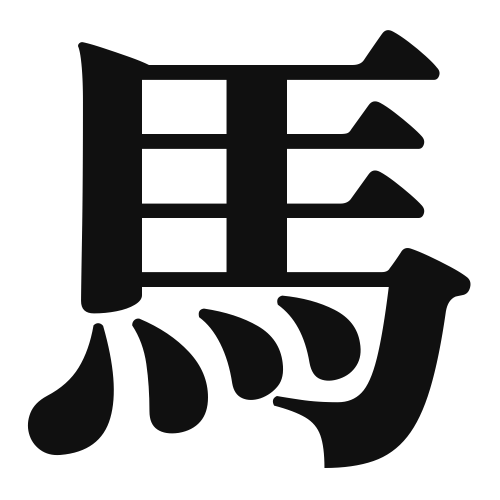1. Overview of Meaning
The kanji “馬” (uma) means “horse” in English. It represents the animal that has been significant in various cultures for transportation, agriculture, and companionship.
2. Formation and Radical
Formation of the Kanji: The kanji “馬” is a pictogram, originally depicting the shape of a horse. It belongs to the category of ideograms, as it conveys the concept of a horse through its visual representation.
Radical: The radical for “馬” is also “馬” (uma), which is used in other kanji related to horses or horse-related concepts.
3. Examples of Usage
Common Words and Phrases: Some frequently used words that include “馬” are:
- 馬車 (basha) – horse-drawn carriage
- 馬肉 (baniku) – horse meat
- 競馬 (keiba) – horse racing
Example Sentences in Daily Conversation:
- 「私は馬が好きです。」(Watashi wa uma ga suki desu.) – “I like horses.”
- 「競馬に行く予定です。」(Keiba ni iku yotei desu.) – “I plan to go to the horse races.”
4. Synonyms and Antonyms
Similar Kanji: A similar kanji is “騎” (ki), which means “to ride” and is often associated with riding horses. The difference lies in the action versus the animal itself.
Antonyms: There are no direct antonyms for “馬,” but one could consider “牛” (ushi), meaning “cow,” as it represents a different type of domesticated animal.
5. Cultural and Historical Background
Relation to Japanese Culture: Horses have played a vital role in Japanese history, especially in agriculture and warfare. They are also featured in various traditional festivals and ceremonies.
Proverbs and Idioms: One common proverb is “馬の耳に念仏” (uma no mimi ni nenbutsu), which translates to “a sutra in a horse’s ear,” meaning that advice or words of wisdom are wasted on someone who does not listen.
